Current Projects
End-user derived research to improve the effectiveness, sustainability, and prevalence of coastal restoration projects
derived research to improve the effectiveness, sustainability, and prevalence of coastal restoration projects
Shoreline erosion is a major concern of coastal land managers. To combat erosion, land managers often install nearshore breakwaters to attenuate wave energy. These breakwater projects are often termed living shorelines, due to the perceived increase in secondary productivity around the breakwaters and preservation of natural shorelines. However, evaluations of the effectiveness of breakwaters at preserving and enhancing natural shorelines are limited. To evaluate the effectiveness of large-scale breakwaters at enhancing shoreline vegetation and associated ecosystem services in high wave energy environments, we are engaging with an advisory panel of stakeholders to conduct experimental plantings and a shoreline monitoring program landward of old breakwaters (constructed in 2012), recently constructed breakwaters (constructed in 2017), and reference no breakwater sites along Bon Secour Bay, AL. Information gained from this research and will be combined with pre-existing literature to create publications and user-friendly outreach materials that will be distributed as manuals, workshops, and meetings for private property owners, contractors, and agencies. The research and outreach associated with this project will improve the effectiveness and ease of implementation of coastal restoration projects. This project is funded by the NERRS Science Collaborative Program.
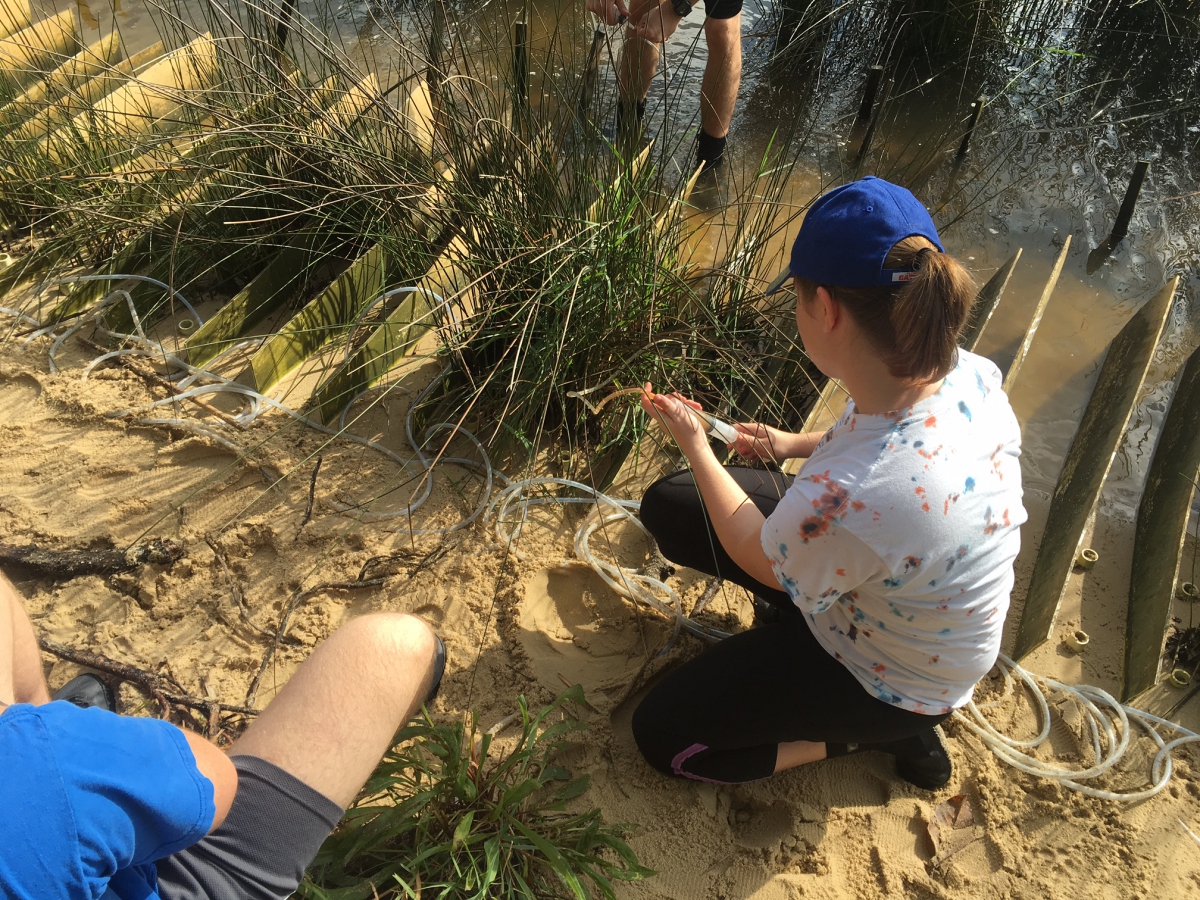
The main goal of this project is to carry out a cost-effectiveness analysis of how various marsh restoration designs ranging in plant density, platform slope and sediment grain size perform in terms of reducing runoff pollution under current and elevated sea level. With this information we will build a decision support tool to help managers maximize the reduction of runoff nutrient pollution through marsh restoration given their specific time and budget constraints. To accomplish this we are working closely work with an advisory panel comprised of environmental officers and managers representing a wide variety of agencies that deal with issues of coastal pollution and wetland restoration. Through this intense collaboration and training, the Panel are vested in the design, development and applications of the decision support tool. Most importantly, through their professional networks they will disseminate and instruct others how to use the tool, thereby having far-reaching implications for the protection and restoration of wetlands and applications for environmental betterment throughout the Gulf of Mexico and other US coastal areas. This project is funded by the EPA Wetlands Program.
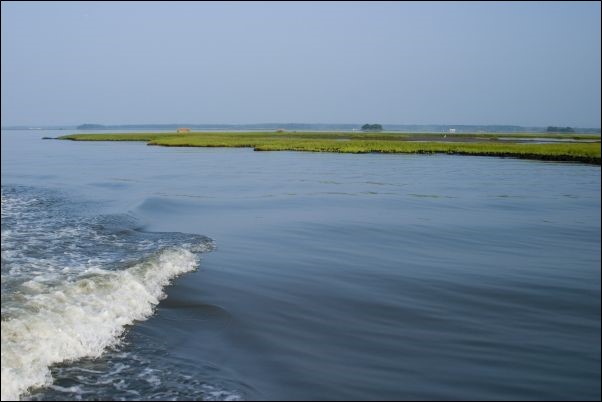 Low-cost wave and flow gage development and application
Low-cost wave and flow gage development and application
Measuring waves and currents is critical for understanding coastal processes, such as hydrodynamics, sediment transport, and bio-physical interactions. However, coastal waves and currents are notoriously difficult and expensive to measure because of the harsh environment and variation in both time and space. The objective of this project is to develop and test an affordable wave and current sensor that is capable of measuring both small coastal waves in shallow environments and larger waves for offshore applications. This technology will equip us to better understand estuarine hydrodynamic processes, and as a result improve our management of estuaries and coastlines for conservation, restoration, sustainability, and resiliency. Portions of this project are funded by the NERRS Science Collaborative, EPA Wetlands, and the MSU Special Research Initiative Programs.
DIY wave gauge website (includes code, tutorials, supply lists, etc.) - http://coastal.msstate.edu/waves
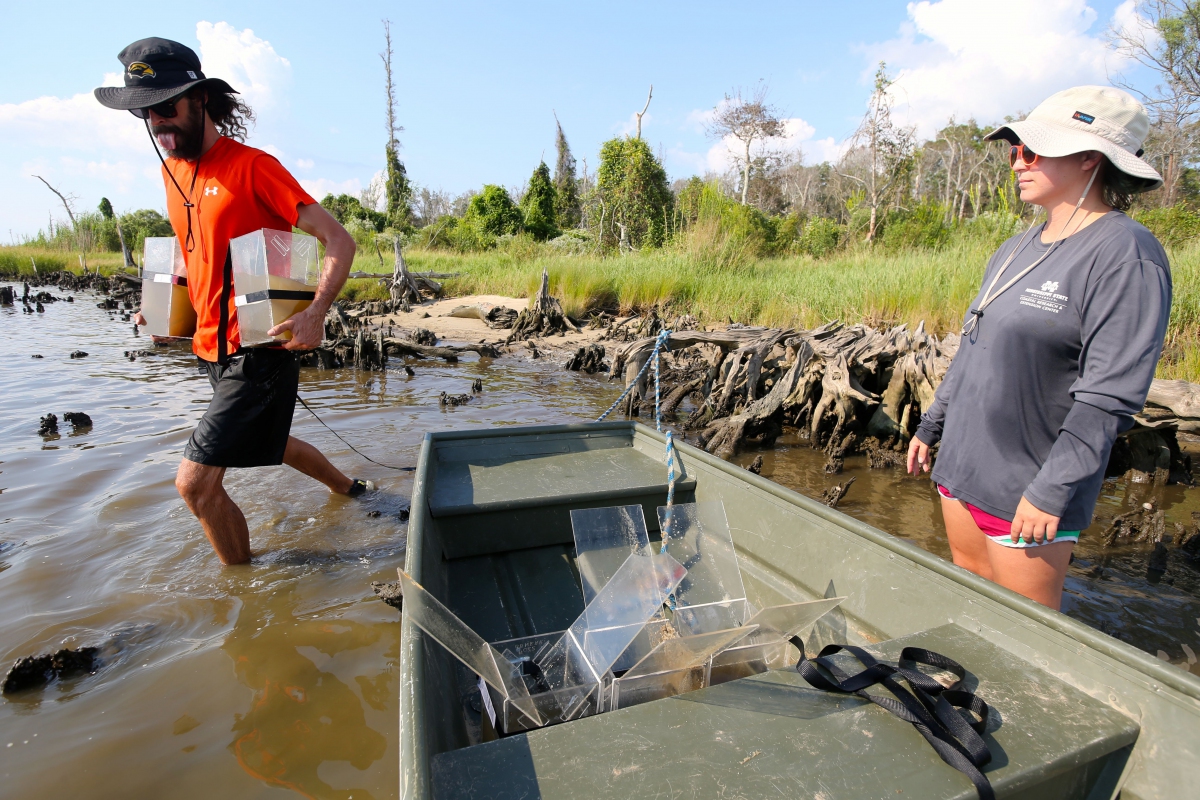 Faunal assemblages associated with living shorelines and implications for high-wave energy ecosystems
Faunal assemblages associated with living shorelines and implications for high-wave energy ecosystems
The primary goal of this study is to evaluate the effectiveness of different shoreline restoration techniques at providing faunal habitat in high wave energy environments. To achieve this goal, we are conducting experiments focused on addressing the three research objectives below.
- Determine the influence of large-scale breakwaters on infauna, epifauna, and nekton assemblages in high-energy environments.
- Determine the effect of shoreline state (planted, naturally colonized, or unvegetated) on infauna, epifauna, and nekton assemblages in high-energy environments.
- Determine if breakwaters and shoreline plants are complementary enhancers of nearshore faunal communities.
This project is funded by the NERRS Science Collaborative Program.
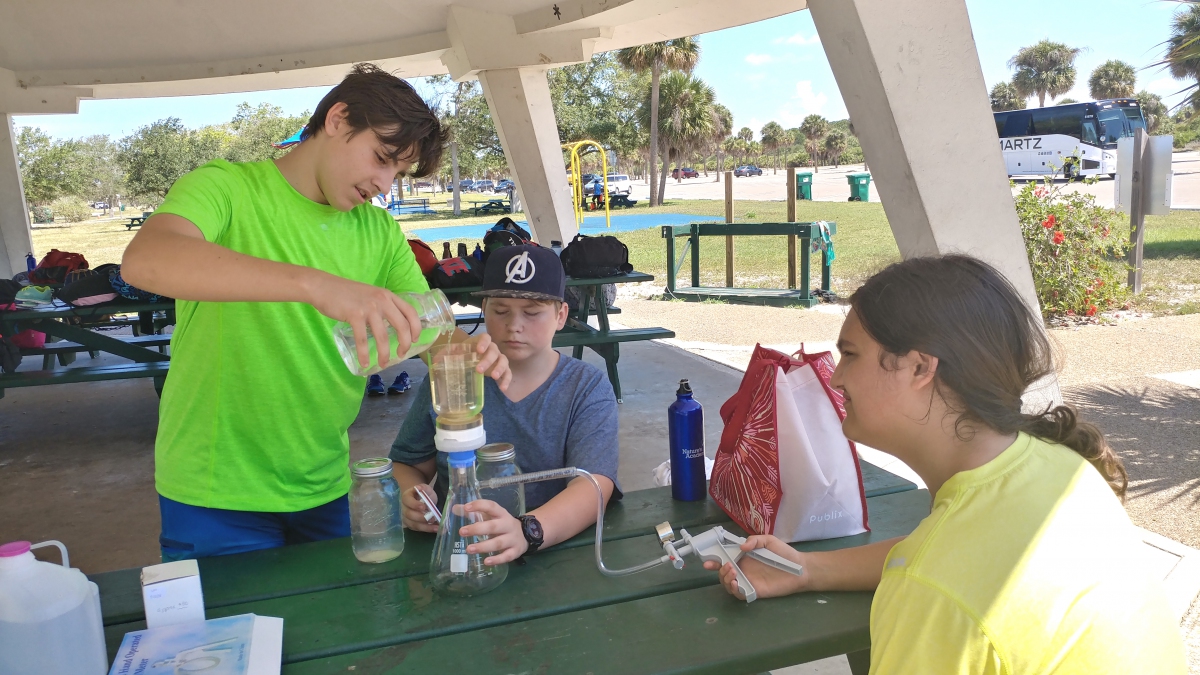
Marine debris is a global issue that significantly reduces the quality of life in coastal environments. However, few education, outreach, and research projects address marine debris and public perception of debris issues has remained relatively unchanged. The masses are hesitant to alter their attitudes toward responsible debris disposal due to the lack of proven links to aspects of coastal life they care about. The primary goal of this project is to increase awareness of marine debris issues by connecting with and involving the public in a citizen science based monitoring project. To do this we are providing sampling gear and training support for participating organizations to train citizen scientists. Across the U.S. Gulf of Mexico, ranging from Corpus Christi, TX to Key Largo, FL, 13 organizations are participating in training local citizen scientists to collect and process beach and ocean water samples for microplastics. The data generated by this project is being used to produce a Gulf-wide microplastics distribution map, accessible online. This project is funded by the Gulf of Mexico Alliance Gulf Star Program.
Project website is here - Citizen Science Microplastic Sampling Map
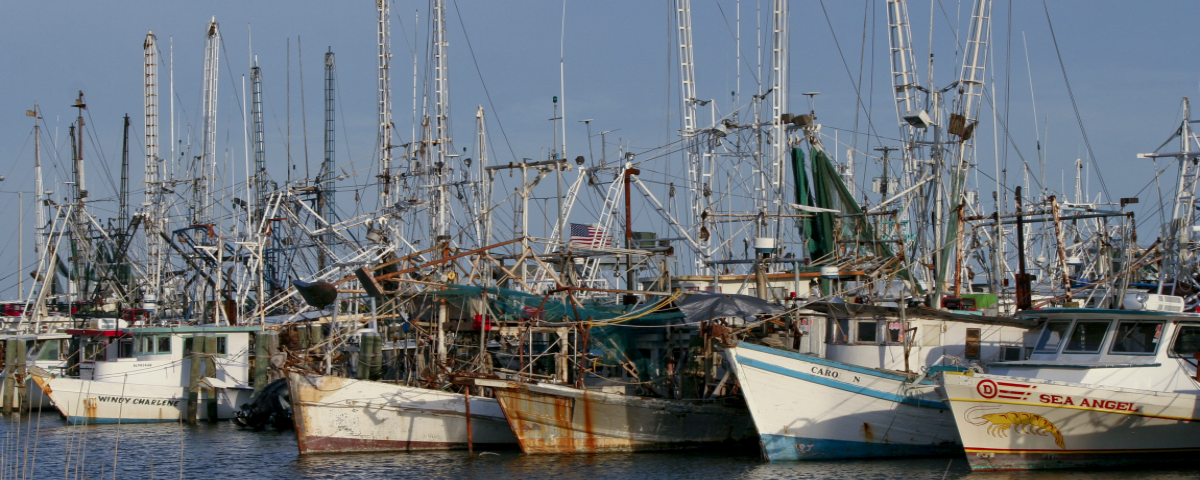 Engaging the fishing community to remove marine debris and quantify impacts
Engaging the fishing community to remove marine debris and quantify impacts
Mississippi State University, Mississippi Coalition for Vietnamese-American Fisher Folks & Families, Mississippi Commercial Fisheries United, and the Dauphin Island Sea Lab are working together to reduce and characterize the impacts of marine debris in Mississippi Sound. To achieve these goals, we are establishing an incentive program to encourage fishermen to properly dispose of caught marine debris; recruiting and training commercial fishing crews to collect information on marine debris distribution; and conducting an economic impact analysis of marine debris on the commercial fishing industry. This project is funded by the EPA Gulf of Mexico Program.
Project website is here - CRAB TRAPS
Plastic Free Gulf Coast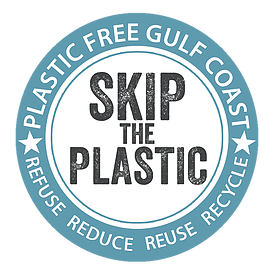
A team led by Mississippi State University is working to stop single-use plastic before it becomes part of the waste stream by raising awareness and creating a larger market for alternative products available to restaurants and consumers. Our program is working with the larger Plastic Free Gulf Coast group to collect data on single-use plastic-use in restaurants, surveying restaurant customers to determine their willingness to pay for environmentally friendly alternatives, perform market feasibility analysis for restaurants to convert to biodegradable packaging alternatives, and raise awareness of the environment impacts of single use plastics on the environment. Components of this project are funded by the Gulf of Mexico Alliance Gulf Star Program and the NOAA Marine Debris Program.
Seeding wetland restoration and conservation in Mississippi high schools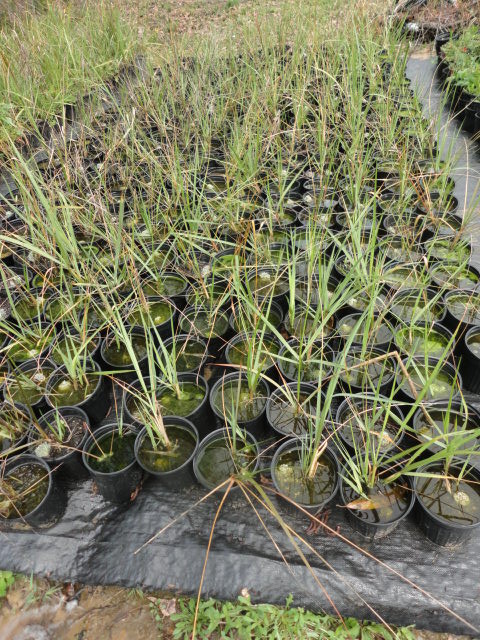
A multidisciplinary team of wetland ecologists and educators are working together to implement a wetland nursery and education program for high schools in coastal Mississippi. Disconnection from nature is apparent along coastal Mississippi, where many children live within miles of pristine natural landscapes, yet rarely, if ever, visit or learn about them. To build resilient and sustainable communities, it is necessary to improve scientific and environmental literacy and promote stewardship of natural ecosystems. The objectives of this project are to 1) develop a curriculum focused on growing wetland plants and the importance of protecting coastal wetlands, 2) establish wetland nurseries at three high schools in coastal Mississippi to pair with the curriculum, 3) take students on field trips to restoration sites to plant their nursery grown plants and obtain first-hand restoration experience, and 4) facilitate related student-designed research projects.
The res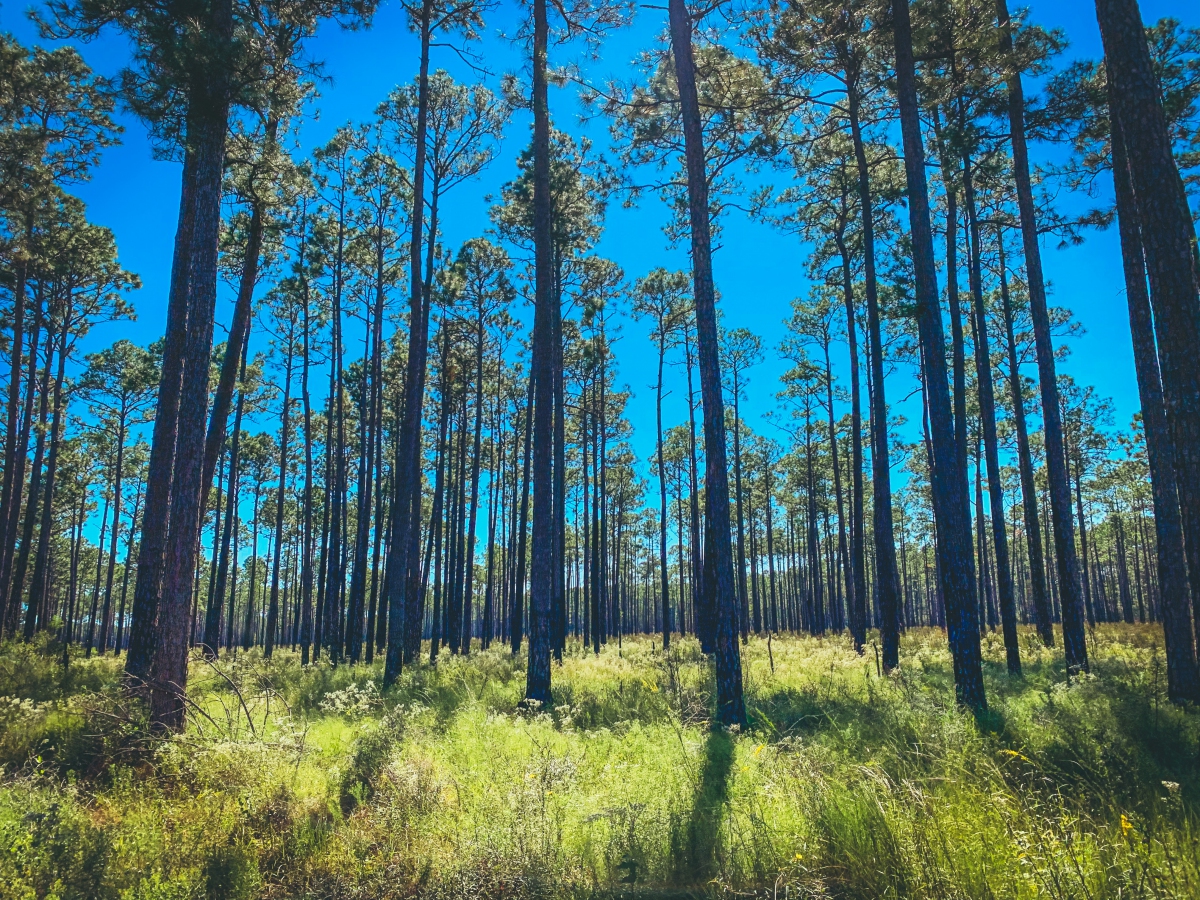 ponse of bats and their insect prey to different coastal upland habitat management techniques
ponse of bats and their insect prey to different coastal upland habitat management techniques
Coastal uplands are home to a variety of flora and fauna, including bats. Bats play a crucial role within ecosystems, but global declines in some bat populations have reduced many of the ecological and economic services bats provide. The greatest threats bats face within the United States are habitat loss, disturbances causing loss of cave hibernacula and maternity roosts, decline of food resources, white nose syndrome, and wind farm turbines. Many forested areas are managed in efforts to improve overall forest habitat quality and increase biodiversity. Understanding how bats respond to land management induced changes within forest habitat is necessary for the conservation of these species. Recently, there have been several large-scale land management projects associated with oil spill funds, including the study site for this project – The Grand Bay National Estuarine Research Reserve (GNDNERR), in Jackson County, Mississippi. This project will determine if the activity and diversity of bats and their insect prey is affected by different coastal upland land habitat management techniques, such as prescribed fire and mechanical clearing, within the GNDNERR. Analysis of bat diversity and activity will be assessed using acoustic surveys using bat call recorders placed within recently burned, mechanically cleared, and unmanaged areas. Black light traps will be used to trap night flying insects and malaise traps will be used to trap day flying insects for analysis of abundance and diversity relationships among potential bat prey between the land management techniques. Findings from this study could be used to inform land managers of the potential benefits and impacts of land management practices on forest bats and their insect prey.
Effe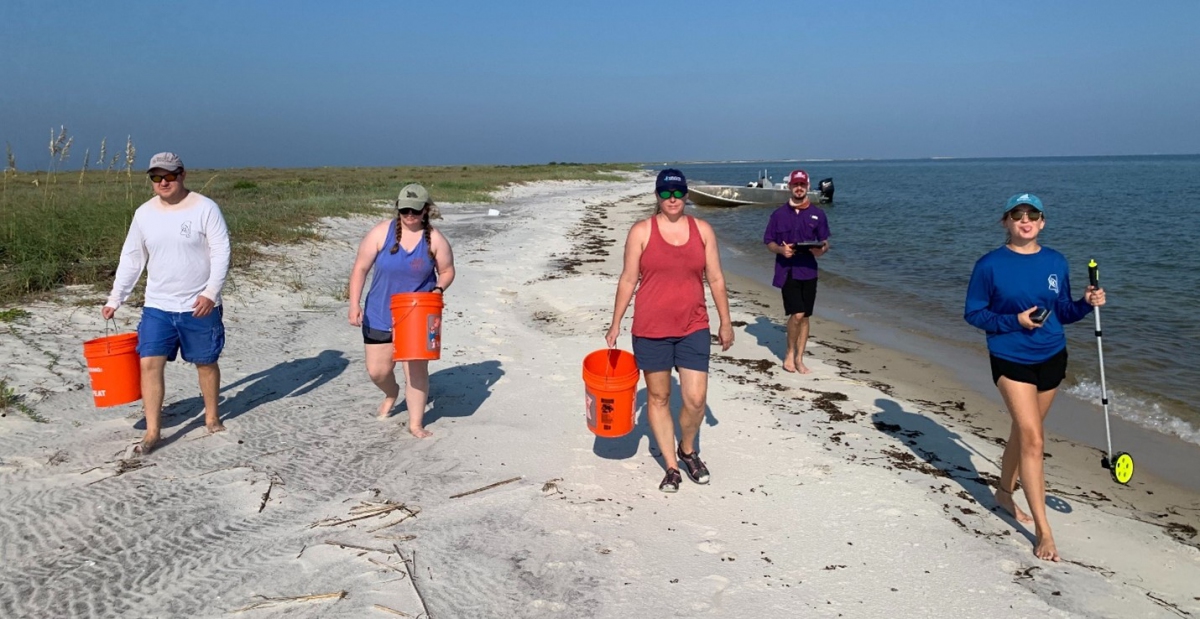 ct of training level and demographics on quality of citizen science collected litter data
ct of training level and demographics on quality of citizen science collected litter data
Citizen science has evolved from just a means to connect local communities to scientific research, to being actively used in a wide range of research efforts. There are many benefits to citizen science, but several perceived limitations. One limitation is citizen science data is often viewed as inferior or unusable by the broader science community. This stigma associated with citizen science data can often be attributed to a lack of data validation by trained professionals across user groups. One of the main hindrances to the usability of citizen science data is the inherently different levels of background knowledge and training levels across participants. To understand this usability of collected data, it will be determined if age, gender, education, training level, and other socioeconomic variables influence the accuracy of citizen science collected data through both aqueous microplastic and shoreline debris data.
The impacts of marine debris on marsh habitat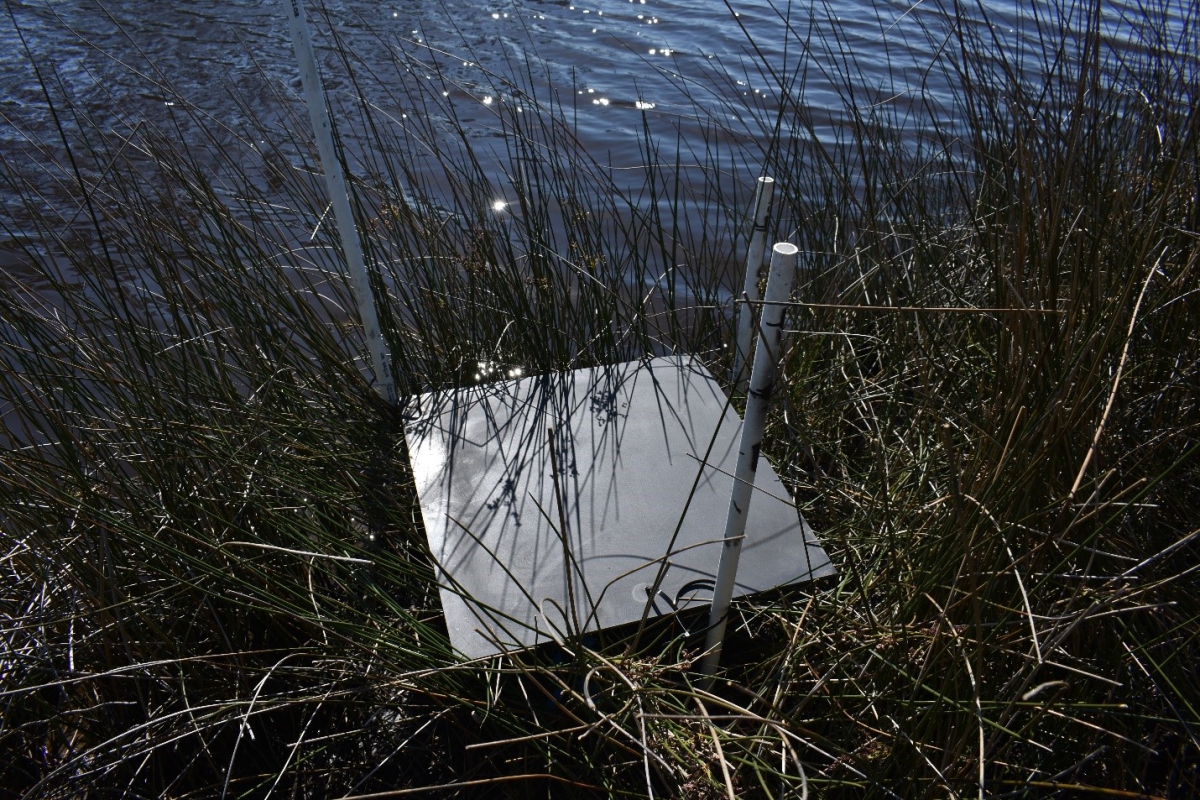
This two-year study is being conducted within the Grand Bay National Estuarine Research Reserve to determine the impacts of marine debris on black needlerush (Juncus roemerianus) marsh habitat. Two debris types (wired crab pots and solid PVC sheets) have been deployed within the marsh and will remain there for varying periods of time. Vegetation density, canopy height, canopy cover, elevation, and sediment grain size are being monitored to assess changes to the marsh throughout the study. At the conclusion, all debris will be removed and a subset of plots will be replanted. Recovery will be monitored between the replanted plots and those left to recover naturally. This study will provide relevant information for prioritization of debris cleanup in the aftermath of disturbances as well as to determine the need for restoration efforts.
Plastic degradation and fragmentation in coastal environments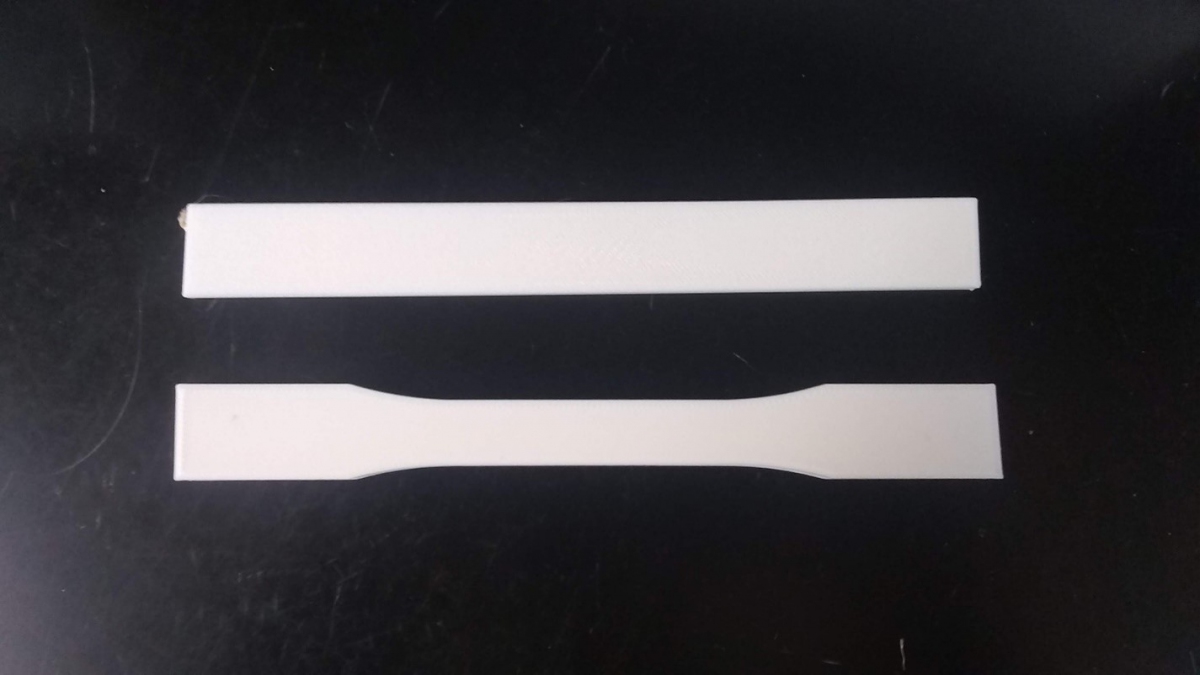
Marine debris, particularly plastics, are an increasing threat to our coastal and marine ecosystems. This two-year study aims to assess the rates of degradation of three common plastic polymer types (high density polyethylene, nylon, polylactic acid) as they are exposed to different coastal environmental typical of the pathways debris travels from land to sea. Specimens will undergo varying treatments of exposure (terrestrial to freshwater, terrestrial to marine, directly to freshwater, directly to marine, terrestrial only) over a two-year period. Subsets of specimens will undergo tensile and bend tests to quantify changes in strength of the material that would indicate degradation and potential for fragmentation. Additional subsets will undergo a mechanical weathering simulation to assess fragmentation. Results from this study will provide insight into the environments and exposure periods most likely to result in plastic marine debris degrading into microplastics.
Fo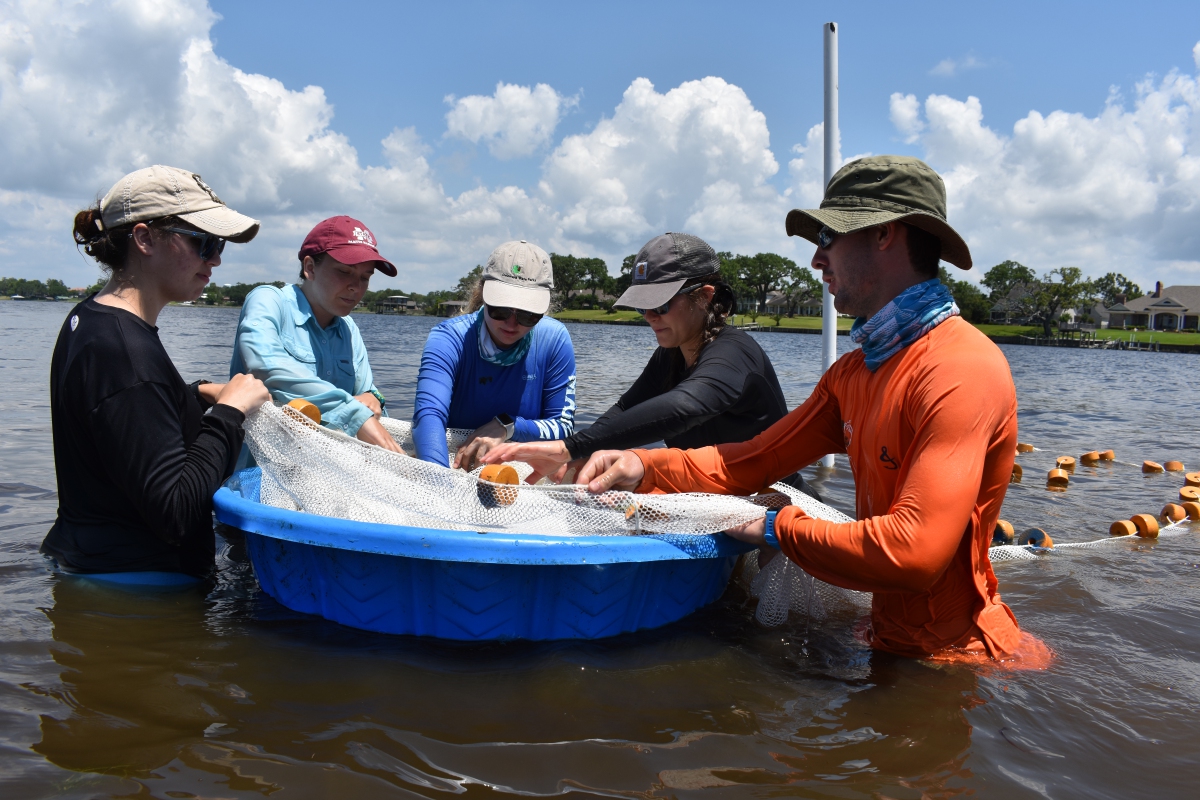 od source contributions to the resident nekton in Back Bay of Biloxi
od source contributions to the resident nekton in Back Bay of Biloxi
Fringing marsh and submerged aquatic vegetation (SAV) are two important components of estuarine ecosystems that provide numerous benefits to both resident and transient nekton. The roles of SAV and fringing marshes at providing habitat benefits is poorly understood in oligohaline environments, particularly in the Northern Gulf of Mexico. In Back Bay of Biloxi, fringing marshes dominated by Juncus roemerianus and water-bottom covered by a species of salt tolerant SAV, Vallisneria Americana, are ubiquitous. The intent of this project is to analyze the base of the food web within Back Bay, MS by adding carbon, nitrogen, and sulfur isotopic analysis. The project’s main goal is to use the results to help inform future fisheries habitat management practices in Back Bay by providing evidence into the nutritional roles of marsh and SAV. The project aims to quantify abundance, biomass, and isotopic composition of small estuarine fish and crustaceans between the two dominant habitat types in Back Bay, fringing marsh and submerged aquatic vegetation (SAV).
The potential for conservation grazing in coastal uplands
Current coastal upland restoration techniques utilized across coastal uplands include combinations of prescribed fire, chemical treatments, and mechanical removal. Each technique is associated with different levels of costs, intrusiveness, ecological damage, logistical constraints, and limitations that can be influenced by climate change. A potential alternative, complementary, and less intrusive technique is conservation grazing, or the use of livestock for habitat management. This project will assess the when, where, and how to implement conservation grazing into land management programs throughout the U.S. Gulf Coast.
Project website is here - Conservation grazing
Past Projects
Coming Soon

